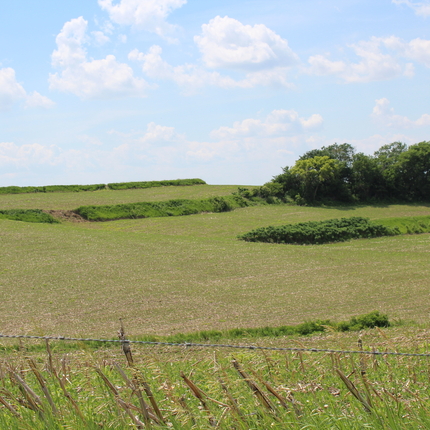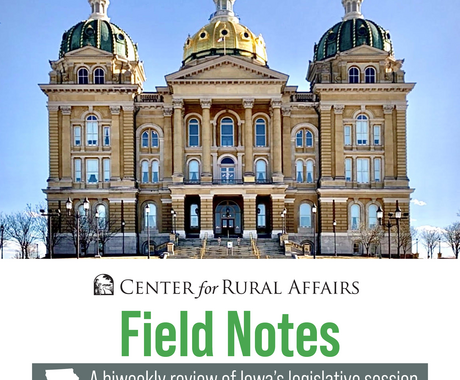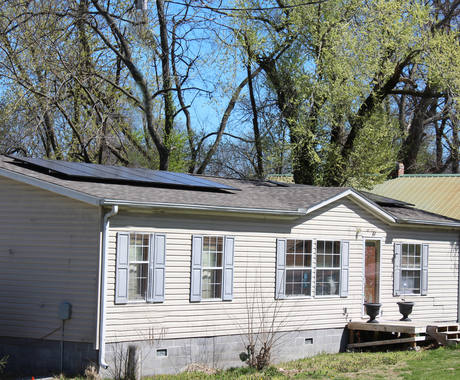This post is another in a series by Jon M Bailey, former director of rural policy and analysis at the Center, focusing on family economic security, health, and well being.
In a previous post I looked at income inequality as a rural issue and its affect on health, and how, at least in Nebraska, income inequality is a rural issue. This time let’s expand our look to include income inequality in all Great Plains states.
Data from the 2015 County Health Rankings for Colorado, Iowa, Kansas, Minnesota, Montana, Nebraska, North Dakota, South Dakota, and Wyoming was used to establish the ratio between the highest and lowest incomes in counties of each state. Not surprisingly, it turned out that high rates of income inequality predominate in rural areas in all of these Great Plains states (see the table of findings below).
Rural inequality ratios in each state are significantly higher than inequality ratios in each state as a whole, meaning the greatest spread between the highest and lowest incomes on the Great Plains are in rural counties.
Interestingly enough, some of the largest inequality ratios in non-rural counties are in “college towns,” home to some of the region’s major universities. For example, the counties in Iowa with the 2 highest income inequality ratios are home to the University of Iowa and Iowa State University, both classified as metropolitan counties.
The high income inequality ratios in these counties and other “college town” counties are likely attributable to the differences in incomes between highly paid university faculty and staff and low paid students and service employees for the university population.
Most debate on income inequality has centered on the economic gains, increases in income, and accumulations of inheritances to the top 1% (or smaller) in recent decades. Generally, income inequality debates and policy proposals have focused on the mega-wealthy, who generally reside in urban areas of the nation.
However, it is clear that income inequality exists to a great degree in one of the most rural areas in the nation. For context, the income inequality ratio for New York County, New York – Manhattan, New York City – is 8.6, higher than any Great Plains county examined here. But it is only a percentage point higher than some of our counties, not insignificant given the presumption of who lives in Manhattan and their incomes compared to very rural counties in the Great Plains.
It is time discussions about income inequality and how to address it include rural places and rural people. Income inequality threatens the very future of rural communities. Research has shown that rural communities cannot viably exist with a two-tiered economy. For decades rural sociologists and others, chiefly Walter Goldschmidt and Dean McCannell, have warned about the dangers of rural communities with a bipolar income distribution.
The data clearly shows that income inequality exists on the rural Great Plains and is becoming an entrenched part of the economic and social system. These high levels of income inequality now exist in an area that was developed with different economic theories and with a desire by many to remove itself from an economy that results in such levels of economic imbalance. Early Great Plains settlers believed income inequality affects health and all aspects of life. As we saw in the previous post, they were right.
For rural communities to survive and thrive, income inequality must be discussed and addressed. It is necessary for rural communities and all rural people to attain their true opportunities and to meet their rightful potential.
Methodology and Data
Data from the 2015 County Health Rankings for nine Great Plains states (Colorado, Iowa, Kansas, Minnesota, Montana, Nebraska, North Dakota, South Dakota, and Wyoming) was employed to determine the 10 counties (and ties) with the highest income inequality ratios. The income inequality ratio measures the ratio of income at the 80th income percentile and at the 20th income percentile within states and counties – essentially, the ratio between the highest and lowest incomes in a specific geography.
Of the 101 counties with the highest income inequality ratios examined, 88% (89 counties) were rural or micropolitan (small city). The rest (12 counties, or 12%) were urban (metropolitan) counties.
The table below outlines the data for each of the nine Great Plains states.
| State | State Inequality Ratio | Highest 10 county inequality ratio average | Rural/micropolitan average inequality ratio in highest 10 counties |
|---|---|---|---|
| CO | 4.5 | 5.14 | 5.13 |
| IA | 4.2 | 4.75 | 4.69 |
| KS | 4.3 | 5.05 | 5.03 |
| MN | 4.3 | 4.84 | 4.89 |
| MT | 4.4 | 5.20 | 5.20 |
| NE | 4.2 | 4.87 | 4.87 |
| ND | 4.4 | 5.71 | 5.60 |
| SD | 4.2 | 5.53 | 5.53 |
| WY | 4.1 | 4.38 | 4.46 |
Source: 2015 County Health Rankings, American Community Survey 5 year estimate, 2009-2013 (U.S. Census Bureau)





